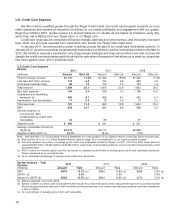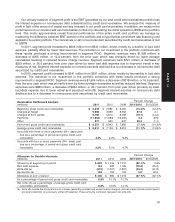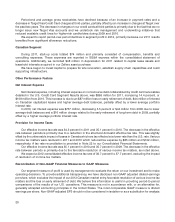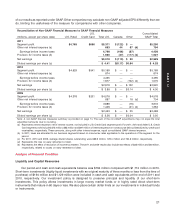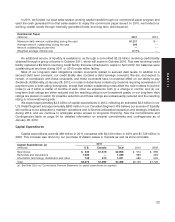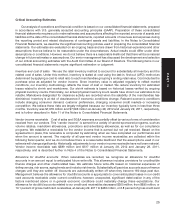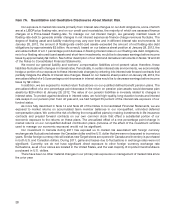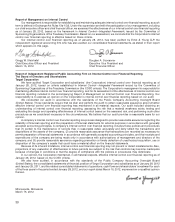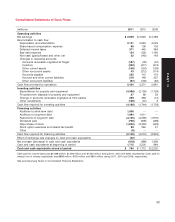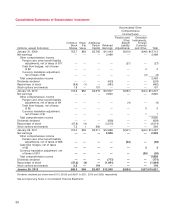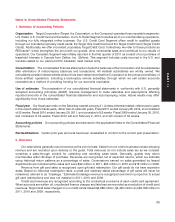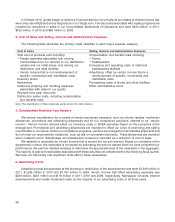Target 2011 Annual Report Download - page 52
Download and view the complete annual report
Please find page 52 of the 2011 Target annual report below. You can navigate through the pages in the report by either clicking on the pages listed below, or by using the keyword search tool below to find specific information within the annual report.Item 7A. Quantitative and Qualitative Disclosures About Market Risk
Our exposure to market risk results primarily from interest rate changes on our debt obligations, some of which
are at a LIBOR-plus floating-rate, and on our credit card receivables, the majority of which are assessed finance
charges at a Prime-based floating-rate. To manage our net interest margin, we generally maintain levels of
floating-rate debt to generate similar changes in net interest expense as finance charge revenues fluctuate. The
degree of floating asset and liability matching may vary over time and in different interest rate environments. At
January 28, 2012, the amount of floating-rate credit card assets exceeded the amount of net floating-rate debt
obligations by approximately $2 billion. As a result, based on our balance sheet position at January 28, 2012, the
annualized effect of a 0.1 percentage point decrease in floating interest rates on our floating rate debt obligations,
net of our floating rate credit card assets and short-term investments, would be to decrease earnings before income
taxes by approximately $2 million. See further description of our debt and derivative instruments in Notes 19 and 20
of the Notes to Consolidated Financial Statements.
We record our general liability and workers’ compensation liabilities at net present value; therefore, these
liabilities fluctuate with changes in interest rates. Periodically, in certain interest rate environments, we economically
hedge a portion of our exposure to these interest rate changes by entering into interest rate forward contracts that
partially mitigate the effects of interest rate changes. Based on our balance sheet position at January 28, 2012, the
annualized effect of a 0.5 percentage point decrease in interest rates would be to decrease earnings before income
taxes by $9 million.
In addition, we are exposed to market return fluctuations on our qualified defined benefit pension plans. The
annualized effect of a one percentage point decrease in the return on pension plan assets would decrease plan
assets by $29 million at January 28, 2012. The value of our pension liabilities is inversely related to changes in
interest rates. To protect against declines in interest rates, we hold high-quality, long-duration bonds and interest
rate swaps in our pension plan trust. At year-end, we had hedged 35 percent of the interest rate exposure of our
funded status.
As more fully described in Note 14 and Note 26 of the Notes to Consolidated Financial Statements, we are
exposed to market returns on accumulated team member balances in our nonqualified, unfunded deferred
compensation plans. We control the risk of offering the nonqualified plans by making investments in life insurance
contracts and prepaid forward contracts on our own common stock that offset a substantial portion of our
economic exposure to the returns on these plans. The annualized effect of a one percentage point change in
market returns on our nonqualified defined contribution plans (inclusive of the effect of the investment vehicles
used to manage our economic exposure) would not be significant.
Our investment in Canada during 2011 has exposed us to market risk associated with foreign currency
exchange rate fluctuations between the Canadian dollar and the U.S. dollar that we were not exposed to in previous
years. Similar foreign currency risk will exist as new Target stores are opened in Canada and inventory is purchased
in both U.S. and Canadian dollars. During 2011, gains and losses due to fluctuations in exchange rates were not
significant. Currently, we do not have significant direct exposure to other foreign currency exchange rate
fluctuations, as all of our stores are located in the United States, and the vast majority of imported merchandise is
purchased in U.S. dollars.
There have been no other material changes in our primary risk exposures or management of market risks since
the prior year.
28


